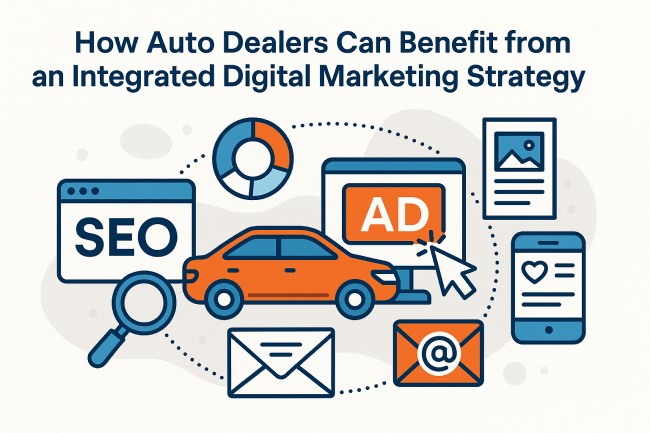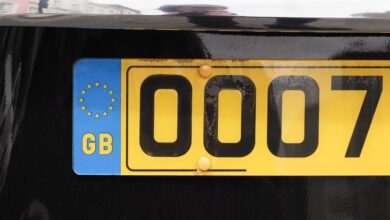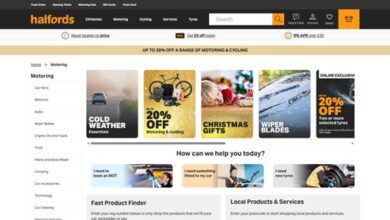How Auto Dealers Can Benefit from an Integrated Digital Marketing Strategy for Better Results

In today’s competitive automotive market, standing out requires more than traditional advertising. Car buyers now begin their journey online, researching models, comparing prices, and reading reviews long before visiting a dealership. To capture these digital-first consumers, auto dealers need a cohesive approach that combines all aspects of online promotion into a single, streamlined strategy. By leveraging an integrated approach through DU digital marketing, dealerships can align their efforts across SEO, SEM, social media, content, and email marketing to maximize results, attract more customers, and ultimately boost sales.
What Is an Integrated Digital Marketing Strategy?
An integrated digital marketing strategy means unifying all online marketing channels to work together instead of in silos. For auto dealers, this includes aligning SEO, paid search ads, social media campaigns, website content, and email marketing to deliver a consistent message. When each element is connected, dealerships can reach potential buyers at every stage of their decision-making process, ensuring they remain engaged from awareness to purchase.
Why Auto Dealers Need Integration Over Standalone Tactics
Many dealerships invest in individual marketing efforts, such as running Google ads or posting inventory updates on Facebook. While these tactics generate some results, they often fail to create a complete customer journey. Integration is vital because:
- Consistency builds trust: A cohesive message across all platforms reassures buyers that your dealership is professional and reliable.
- Stronger brand identity: Buyers recognize your dealership more easily when they see consistent branding.
- Better lead nurturing: Integration ensures prospects receive relevant information at each touchpoint, making them more likely to convert.
- Improved ROI: With unified efforts, marketing spend becomes more efficient, reducing wasted ad dollars.
The Role of SEO in Integrated Marketing
Search Engine Optimization (SEO) is the foundation of digital visibility. It ensures your dealership’s website appears in search results when potential buyers are researching cars online. In an integrated strategy, SEO works alongside other elements to:
- Drive organic traffic through optimized content.
- Support SEM by reducing cost-per-click with improved website quality scores.
- Feed social media with blog content and videos optimized for keywords.
- Provide analytics insights that guide email and retargeting campaigns.
Without SEO, dealers risk missing out on long-term, organic visibility that keeps their brand top-of-mind.
How SEM Strengthens the Strategy
Search Engine Marketing (SEM) complements SEO by generating instant traffic through paid ads. Integrated SEM campaigns allow dealerships to:
- Target buyers searching for specific makes, models, or financing options.
- Launch remarketing campaigns to re-engage visitors who didn’t convert.
- Sync promotions with seasonal sales and dealership events.
- Collect valuable keyword data to inform SEO and content strategies.
By combining SEM with SEO, dealers cover both long-term and short-term opportunities, capturing leads at every stage of the funnel.
Social Media’s Contribution to Integration
Social media platforms like Facebook, Instagram, and TikTok are central to millennial and Gen Z car buyers. For auto dealers, social media offers:
- Audience targeting: Paid ads can reach users based on location, interests, and buying intent.
- Engagement opportunities: Organic posts allow dealers to showcase vehicles, promotions, and customer testimonials.
- Lead generation: Platforms offer built-in lead forms, simplifying data collection.
When integrated, social media content drives traffic to SEO-optimized blogs, SEM campaigns retarget engaged audiences, and email campaigns nurture leads generated from social ads.
The Importance of Content Marketing
Content is the glue that holds digital marketing strategies together. An integrated approach ensures content serves multiple channels and buyer needs. For auto dealers, valuable content includes:
- Blog posts comparing models, financing options, or features.
- Video tours of new inventory or behind-the-scenes dealership clips.
- Infographics explaining leasing vs. buying.
- Case studies highlighting satisfied customers.
This content supports SEO rankings, powers social media engagement, and provides material for email campaigns, ensuring prospects are informed and nurtured consistently.
Email Marketing as a Conversion Tool
While SEO, SEM, and social media drive traffic, email marketing nurtures leads into customers. For dealers, integrated email campaigns:
- Deliver personalized offers based on browsing behavior.
- Share updates about new inventory, service specials, or events.
- Re-engage past customers with trade-in opportunities.
- Reinforce brand consistency with aligned messaging.
When integrated, email works seamlessly with other channels, keeping your dealership in front of prospects until they are ready to buy.
Analytics: The Foundation of Integration
One of the most powerful aspects of an integrated strategy is unified analytics. Instead of tracking SEO, SEM, and social media separately, integration allows dealers to view all efforts under one dashboard. This helps to:
- Identify which channels drive the most conversions.
- Track customer journeys across multiple touchpoints.
- Optimize ad spend by focusing on high-performing tactics.
- Adjust strategies quickly when market trends shift.
Analytics ensure every marketing dollar is used effectively, making integration far more profitable than isolated efforts.
Benefits of an Integrated Digital Marketing Strategy for Auto Dealers
When executed correctly, integration provides clear advantages:
- Increased visibility: SEO ensures long-term ranking while SEM delivers immediate reach.
- Higher engagement: Consistent messaging across social media, content, and ads keeps buyers interested.
- More qualified leads: Targeted campaigns filter out uninterested audiences, focusing only on potential buyers.
- Stronger trust and credibility: A unified online presence builds buyer confidence.
- Better ROI: With cross-channel collaboration, dealers maximize their marketing budget.
Overcoming Challenges in Integration
While integration offers clear benefits, some challenges exist:
- Resource management: Coordinating across channels requires time and expertise.
- Content creation demands: Regular blogs, videos, and emails take consistent effort.
- Data silos: Without proper tools, data may remain disconnected.
- Technology costs: Advanced analytics and automation platforms can require investment.
Future of Integrated Marketing for Auto Dealers
The automotive industry will continue to evolve with consumer behavior. Looking ahead, integrated strategies will incorporate:
- AI-powered personalization: Customizing ads, emails, and content for each buyer.
- Voice search optimization: Preparing for voice assistants influencing buying decisions.
- Advanced video marketing: More dealerships will use short-form video on TikTok and Instagram.
- Omnichannel automation: CRM and marketing platforms will align seamlessly, ensuring consistent follow-up across touchpoints.
Dealers who adopt these innovations within integrated strategies will stay ahead of competitors and build stronger relationships with buyers.
Conclusion
Auto dealers cannot rely on fragmented marketing efforts in today’s digital-first landscape. A fully integrated strategy that unites SEO, SEM, social media, content, and email creates a seamless customer experience, guiding buyers from research to purchase. By embracing integration, dealerships not only improve visibility but also build stronger trust, generate more qualified leads, and boost ROI.



